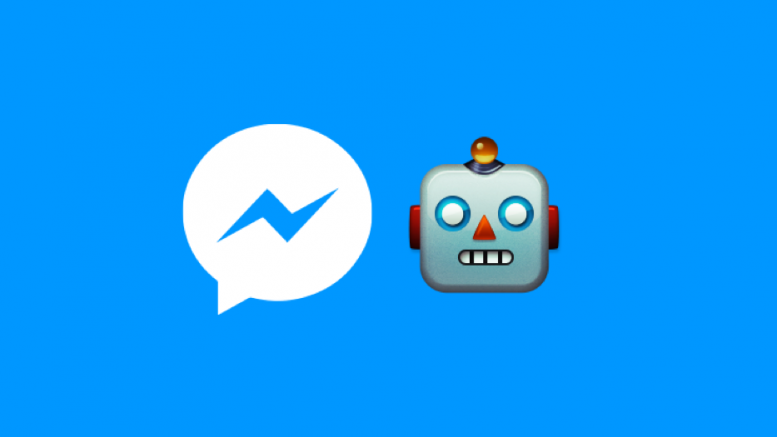Chatbots are one of many great promises in information technology. They were conceived as a new interface, designed to replace or complement applications or visits to a website by having users simply interact with a service through a chat. A chatbot is a software tool that interacts with users on a certain topic or in a specific domain in a conversational way using text and voice. These computer programs are able to process natural language, and offer answers to user questions. The answers, however, do not always come in the form of text, but sometimes constitute concrete actions, such as showing a video when a user asks for it, showing a photograph, making a purchase, scheduling an appointment and much more. For many different purposes, chatbots have been used in many different fields such as customer service, technical support, marketing as well as education and training. It can be assumed that the use of chatbots in education will develop even further in coming years as users become used to interact with the digital world and new technologies are integrated into all areas of everyday life. Over the last few years, chatbots and pedagogical agents have motivated educators to integrate messaging tools in teaching and learning.
In which areas of education can chatbots be used?
Artificial Intelligence can be used as a teaching assistance for educators in schools and universities and other education facilities or even companies in which employees are being trained and teached. The chatbot softwares can be used as a support for the administrative staff in educational institutes regarding enrollment, administrative deadlines or updates for students for example give various information regarding campus life like upcoming events, scholarships, course models etc. Another try on how chatbots can be used in education is to improve student retention. According to results of the National Student Clearinghouse, almost 40% of first-time-students drop out of the college they first enrolled in. In a new attempt to increase the student retention, colleges are using chatbots to directly communicate with their students – learning about possible financial burdens, (mental) health issues, or anything that would let them consider dropping out of college. The usage of chatbots in education promises does not just help in administration but goes further than that. Chatbots in schools, universities and companies can be used as tutoring method. In times of the Covid-19 crisis chatbot technology also shows potential as a teaching and learning tool in the distance and online education.

But what are the functions of the Chatbots in Education?
Students can ask questions, look up information or take quizzes and submit them to their teacher for a grade, or get a performance assessment or a automatic grading directly from the Chatbot itself. Chatbots can also act as a personal tutor for struggling students, even at a young age. The provided anonymity can encourage even shy students to ask the chatbots questions they wouldn’t ask in class in front of their classmates. As the embedded video shows, simple mathematics (addition, subtraction, etc.) can be easily taught by a chatbot.They do not just help in teaching process but can also monitor the student’s learning progress. Students can constantly get information about lesson plans, course modules, assignments, and their deadlines in the easiest way.Some chatbots help prospective students enroll in a university through a consultancy. Their responses are stored for the consultancy to look at and take the procedure further from here.Like mentioned before education isn’t limited to students, also employees can learn trough the help of chatbots. A use case of eggheads.ai (specialized on knowledge transfer in companies) for example shows a chatbot for Cyber Security Awareness Trainings – so employees can learn in a dialogue about cyber security risks and how not to become a victim of attacks themselves.
How do they benefit exactly?
Chatbots engage students with different media to take a break from heavy text-based messages and enjoy some graphically pleasing learning content. This increases the potential to learn quickly and develops an interest in the longer run. Apart from enhancing learning, it will make students more tech-savvy and ready to put their foot into the real world where employers presuppose a skillful use of new, technologies. It also allows the teacher to reduce time invested in organization and execution of tasks since chatbots provide immediate answers, previously predesigned, to frequent questions of the students. This time saved can be invested in research or projects pending for the course, as well as in supervision and motivation of the group. Chatbots can also recommend students more relevant learning content by analyzing their learning skills and adapting to the rhythm of the student. Therefore it also can provide students with a personalized feedback and the teacher can monitor the work of each student and store and analyze this data effectively when reviewing the evaluation and progress of students. As for the question of how – there are several chatbot building platforms in the market that offer education bots that are designed to engage students and provide short and snappy but valuable information. These platforms are integrated into Facebook, Twitter, Skype, and other social media apps to make learning as fun and interesting for the students as possible and at the same time, eliminate the need for dozens of online portals and email accounts to switch in between. In conclusion it can be said, that chatbots have the potential to revolutionize the future of education and focus on the individual progress of a student and their special needs rather than the progress from the class as a whole. Because they offer quick resolution to problems they could shorten the cycle of procedures surrounding organizational issues and administrative concerns. The introduction of AI to classrooms was overshadowed by other businesses, mainly because of the slow adaptability and acceptance of the education industry to new technology. But now more and more administrations and teachers are recognizing this cost-effective yet valuable way to keep their students hooked and streamline processes more efficiently. Kids are growing up with tablets in their hands, so teaching them about new technology and programs will only serve to prepare them for the wider world. The fact that the younger generation is quick to learn and embrace new technology as per the recent trends, we can see a massive move further from single-utility websites and apps to social media and messaging platforms like WhatsApp and Facebook messenger – that do more than just sending and receiving messages. Due to the fact that chatbots are constantly evolving and are increasingly able to interact with emotional intelligence, it cannot be excluded that they will play a larger role in education in the future.
A text by Jana Falkner, Julia Fuchs, Kristina Maric, Lena Körner, Elisa Seidel, Valerie Jung & Victoria Krüger

